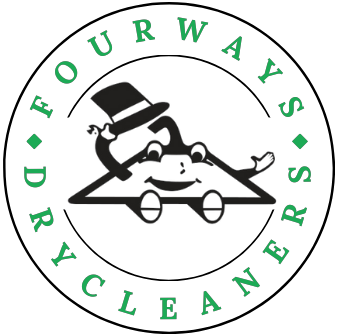Frequently Asked Questions
You Have Questions, and We Have Answers!
What exactly is drycleaning?
Drycleaning is the use of solvents to remove soil and stains from fabric. It is called ‘drycleaning’ because the solvents contain little or no water and do not penetrate the fibres as water does. Drycleaning solvent is not harmful to any fabric and is often the only safe method for cleaning many types of garments.
What are the benefits of drycleaning?
Drycleaning dissolves grease and oils in a way that water cannot. Natural fibres like cotton, wool and silk can shrink, distort and lose colour when washed in water but dry clean easily. Synthetic fibres like polyester also respond well to drycleaning, but they can retain oily stains after ordinary washing. Drycleaning helps to return garments to their original condition by using precautions to prevent shrinkage, loss of colour and change of texture or finish.
Is it environmentally friendly?
Research shows that compared with domestic laundering, drycleaning saves water and uses less detergent. Research is always being done to improve the chemicals used in drycleaning.
Can dry cleaning damage clothes?
No, on the contrary. Drycleaning prolongs the life of your clothing because it is being treated according to exact fabric specifications.
‘Dry cleaning is so gentle you could clean a tissue and then still use it.’
Misnomers and Misconceptions
Milk
Milk has been used by many people as a spot removal for such stains as ink and blood. As a dry cleaner, there is one incident that explains the danger of this substance as a spot remover: A customer brought in an expensive antique satin set of drapes which has been stained by ink. The customer had attempted to remove the ink by using milk. We treated the stains and were successful in removing the ink; however, the milk had set and could not be removed. Milk is an albuminous substance that can set in fabrics and become impossible to treat. It should never be used as a stain remover.
Soda Water
Soda water is often touted as a successful stain remover by restaurant personnel and airline attendants. By popular belief, the bubbles in soda water provide some mystical properties capable of removing stains. Soda water has the same properties as water and nothing more. The bubbles do not act as a stain remover whatsoever.
Alcohol
Alcohol does provide some good stain removal properties; however, it is also an agent that will alter dyes and discolour fabrics. Many deodorants contain alcohol, and most of us are familiar with the discolouring properties of this toiletry. Lemon juice is advocated for the removal of rust stains. While it is sometimes effective, it should be noted that after a period of time, the lemon juice will oxidise and may cause a stain that cannot be removed. Ice has been advocated as a remedy for chewing gum stains. The ice stiffens the gum and allows it to be picked from the fabric. This may work in limited cases, but it should be pointed out that gum dissolves easily in dry cleaning solvent- a much safer remedy than picking at the fibres of a delicate fabric.
Soap and Water
Soap and water have been advocated for the removal of all stains; however, dry based stains such as glue, paint, oil and nail polish cannot be removed using soap and water. Many times I have encountered situations in which people have literally rubbed holes in fabrics in an effort to remove a stain. In some instances, soap and water can actually set or prevent the stain from being removed. This is due to the alkali content, which will oxidise stains such as coffee, tea, soft drinks, liquor and fruit juice.
Hot Iron for Wax
Using a hot iron to remove wax from a garment is a sure way to fuse, melt and damage most synthetic fabrics. Wax dissolves in dry cleaning solvent and can be readily and easily removed by any dry cleaner.
Hair Spray
Hair spray can be an effective agent in removing ink stains; however, hair spray contains alcohol and other ingredients with properties that can be dangerous to many dyes and fabrics.
Nail Polish Remover
Nail polish remover is used by many people to remove make-up and other stains; however, nail polish remover often contains acetone which can dissolve certain fabrics such as acetate.
Colour-Safe Bleach
Colour-safe bleach does not exist. There is no such thing. Any bleach can remove colour and damage dyes on fabrics.
Source: Dan Eisen (founder of East Coast School of Dry Cleaning, Chief Garment Analyst at New York's largest garment lab, lecturer on textile care of Fashion Institute of Technology USA)
Our
Services
All your belongings are important. You can trust Fourways Drycleaners to care for them and return them to you.
